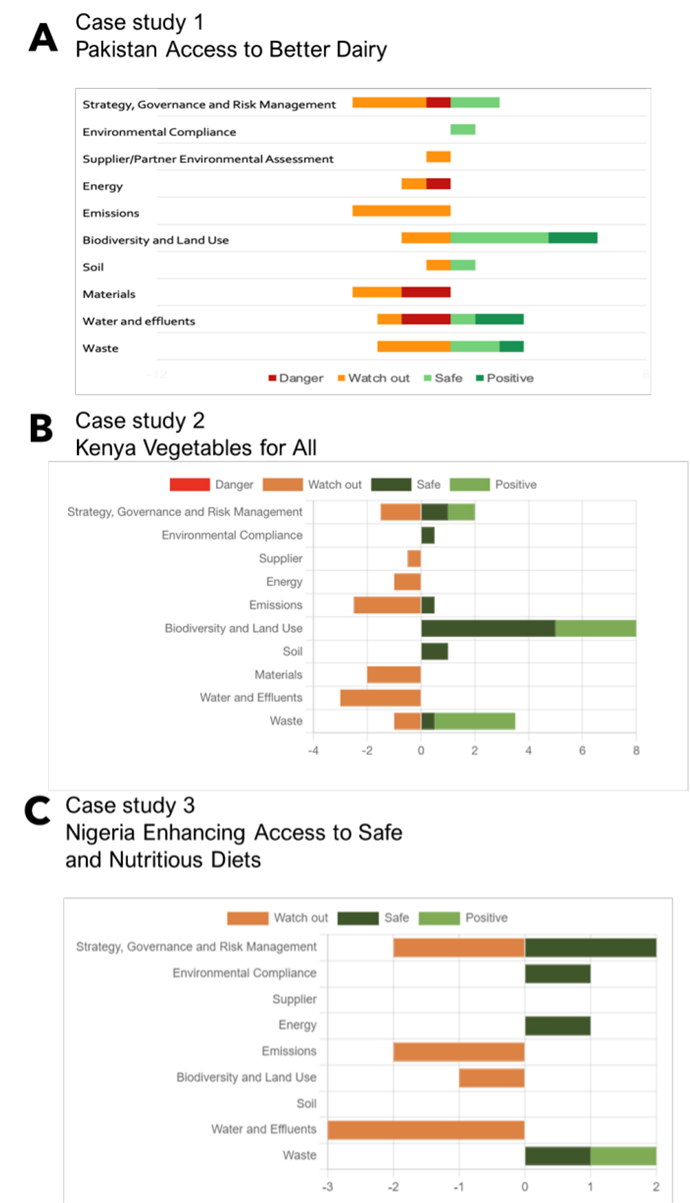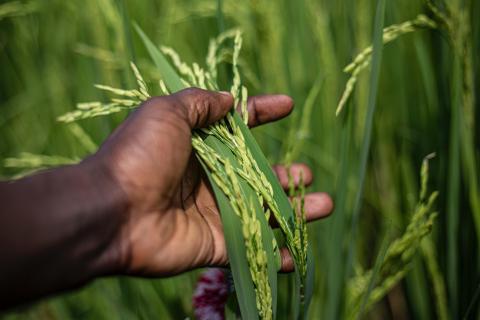Greening nutrition: Integrating environmental screening into GAIN’s programmes
This is a summary of the following paper: Camp O, Remans R & Colston J (2023) Greening Nutrition: Integrating environmental screening into GAIN’s programmes. Global Alliance for Improved Nutrition (GAIN). https://doi.org/10.36072/wp.36
Food and nutrition security are highly dependent on the environment, yet current food systems continue to contribute to climate change and degrade the environment on which they depend. In this report, the Global Alliance for Improved Nutrition (GAIN) focuses on the necessity of including environmental considerations in nutrition programmes – not only strategically at a high level, but also operationally – to sustainably address food and nutrition insecurity.
GAIN has designed an ‘Environment Screening Tool’ to systematically incorporate environmental considerations into its programmes. This tool enables a rapid self-assessment, which identifies environment-related risk factors, prompts mitigation actions, and encourages teams to explore opportunities for environment/nutrition win-wins.
The tool prompts project teams to consider risks and opportunities around ten clustered environmental impact levers1 likely to be associated with their project and to delve deeper into each of the relevant impact levers to tackle specific impact pathways, risks, mitigation actions, and opportunities for positive impact.
The tool was piloted on ten different nutrition projects that covered various geographies and settings (Pakistan, India, Nigeria, Mozambique, Kenya, and Ethiopia), focused on a diversity of food groups (vegetables, animal-source foods, and biofortified staples), and used different levers of change (workforce nutrition, value chain approaches, business empowerment, and policies, among others). Figure 1 synthesises the scores of the screening tool of three case studies. For each project, at least one area of environmental risk (orange/red) and one of opportunities (green) were identified.
Results indicated that for each pilot project, concrete and actionable entry points to ‘green’ the project were identified through application of the tool. The environmental levers that were consistent across all ten projects were: governance, compliance, waste, and energy. Some of these opportunities were already included in the original design of the project (e.g., better waste and by-product management), while others surfaced during the screening and co-learning process (e.g., better monitoring and management of what happens with the whey by-product in Pakistan). Potential trade-offs were also identified (e.g., fermentation processes to reduce waste contribute to energy and water use). Several of the mitigation or co-benefit actions fell outside the scope of GAIN’s work, which encouraged the identification of potential engagement or partnership with other organisations.
The authors conclude that the tool provides a concrete and feasible entry point for nutrition programmes to connect to the environmental dimension of food systems.
”œTrade-offs between nutrition and environment sometimes exist. The tool and related process help make potential trade-offs explicit and visible. This is important to stimulate long-term thinking, planning, and partnerships.”
Figure 1: Example of initial screening scores at the design phase

1 The ten environmental levers identified to address programme impacts on the natural ecosystem are: 1. Strategy, governance, and risk management; 2. Environmental regulation compliance; 3. Supplier/partner environmental maturity; 4. Energy; 5. Emissions; 6. Biodiversity and land use; 7. Soil; 8. Materials; 9. Water and effluents; 10. Waste.


 English
English Français
Français Deutsch
Deutsch Italiano
Italiano Español
Español